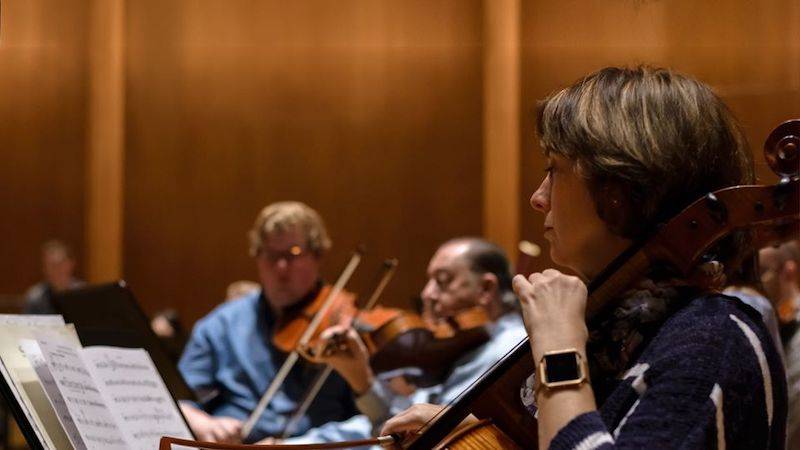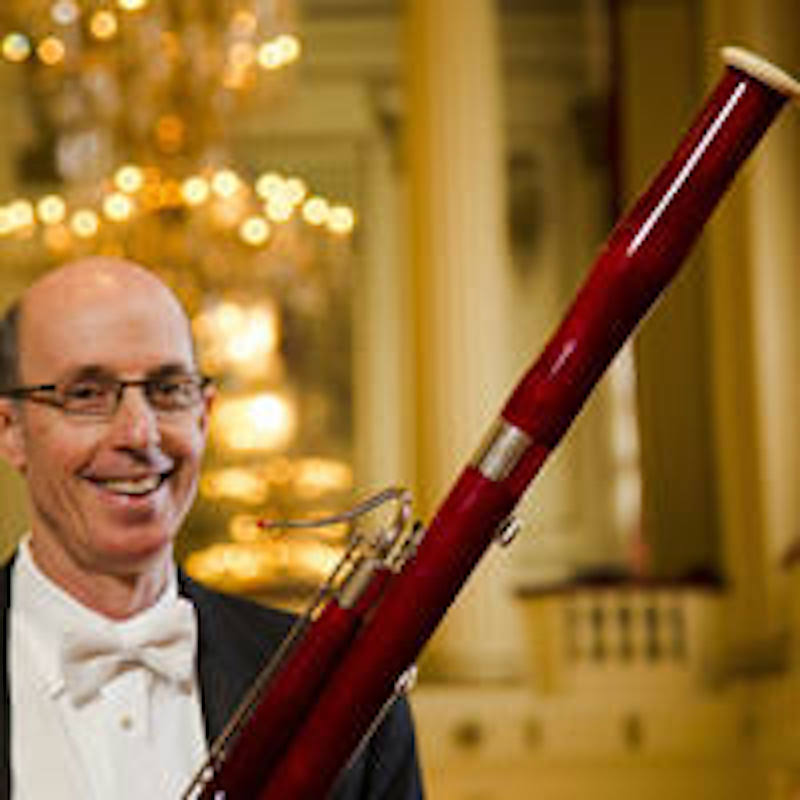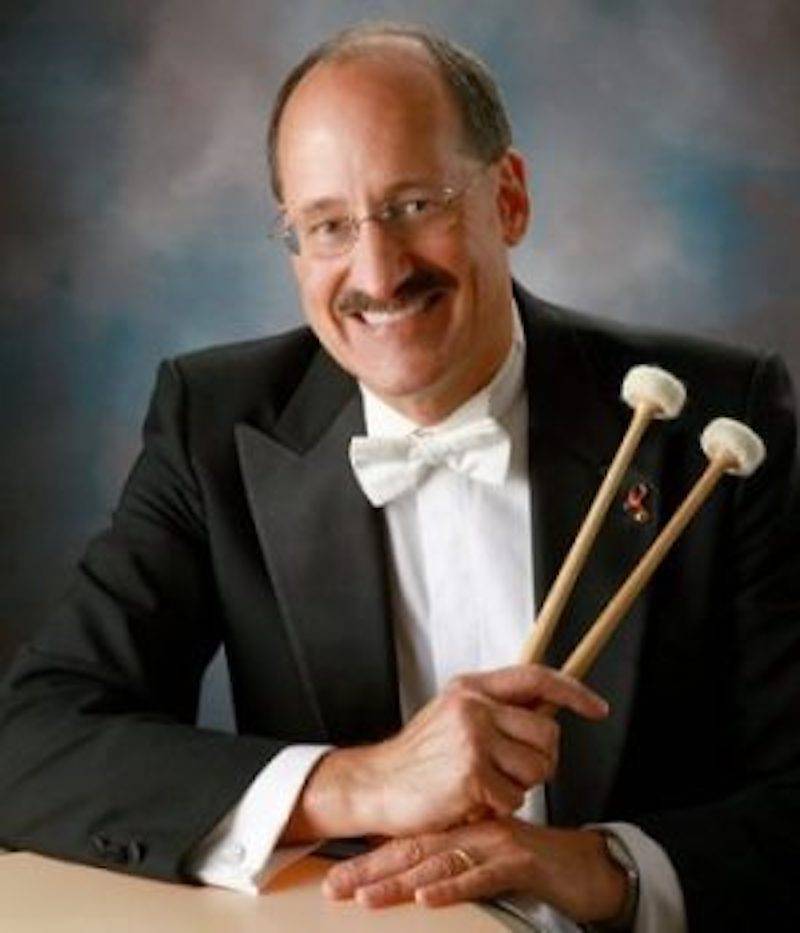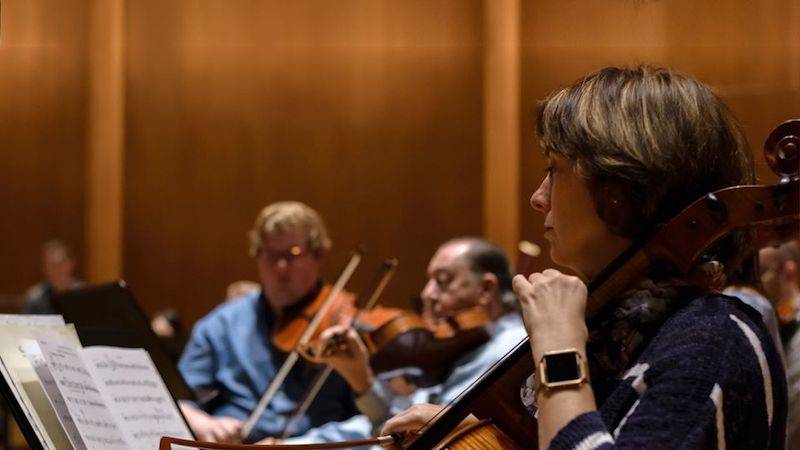I made this joke in The Overture this week, but I want to start off with what might not be so obvious for some of us: Sinfonia da Camera is not a camera company. They can’t help you with your film. They won’t be able to help you focus your lens for the perfect shot. It’s just simply not what they do.
So, what do they do?
Sinfonia da Camera is one of Champaign-Urbana’s foremost performance groups of art music. The group takes their name from the Italian for “chamber symphony” or “chamber orchestra.” In musical terms, that means a small orchestra that historically would have been used for private entertainment within homes or smaller venues. Founded in 1984 by Ian Hobson, a well-known and well-respected pianist and conductor who holds the title of Swanlund Emeritus Professor of Music at UIUC, Sinfonia has performed with artists like violinist Itzhak Perlman and premiered works by famous composers like Elliott Carter.

Image: A close-up image of a woman playing a cello. She wear a blue and white sweater. Other members of the orchestra can be seen behind her out of focus. Image from the Facebook event page.
This Saturday, February 8th, Sinfonia da Camera will perform their first concert of the new year. Featuring pieces by composers Bax, Weber, Koppel, and Schubert, Sinfonia will be performing pieces from the early 19th century (Schubert, Weber) through the late 20th century (Koppel). What really excites me about this concert, however, are the two soloists who will be performing alongside Sinfonia: Henry Skolnick (bassoon) and William Moersch (marimba). The pieces by Weber and Koppel offer audiences an opportunity to see these masterful musicians at their finest, and it won’t be something you’ll want to miss.
Below, I’ve written up a few notes on each of the pieces Sinfonia will be performing and offered some suggestions on how to tackle these pieces if you’re someone who is new to the Western art music scene but wants to try it out. If you’ve never been terribly interested in “classical” music, I highly recommend this concert as one that might change your mind. Even if you don’t leave loving the music, I have no doubt that you will leave impressed by the technical abilities of the soloists and the orchestra.
Sir Arnold Bax: Three Pieces for Small Orchestra
Sir Arnold Bax was born in England in 1883 and was, for a time, one of the leading young composers of his generation in Great Britain. His works during the interwar period were especially remarked upon by his contemporaries. Though he lived his life almost completely during the “modern era” of Western classical music, Bax’s compositions (especially his tone poems and symphonic works) reflect a deep influence from the Romantic Era of the 19th century. Bax’s works show a keen interest in nature and how the natural world could be captured and reproduced through music. He also had a very serious interest in the culture of Ireland. The piece Sinfonia will be performing, Three Pieces for Small Orchestra, combines these two interests seamlessly, especially in the second movement titled “Irish Landscape.” When listening to this work – especially if you’ve never heard it before – I recommend closing your eyes from time to time, attempting to imagine the landscapes Bax attempted to recreate in his music. Allow the musical contours and clashes to build the world for you. Speaking from experience, I wouldn’t recommend closing them for too long, though. Sometimes what starts as an attempt to see with your ears ends with a rib in the side because you’re snoring through your stroll in the Irish countryside.
Carl Maria von Weber: Andante e Rondo Ungarese, “Hungarian Fantasy” (Op. 35)
Carl Maria von Weber, one of the first composers of the German Romantic School of composition, lived a full, but short, life. Born in Northern Germany in 1786, he died of Tuberculosis in 1826, aged 39. In his 23 years as a career musician, von Weber would prove to be highly influential in the development of 19th century opera. His works for wind instruments like the clarinet, horn, and bassoon have also become staples of the repertory for those musicians who study them. His “Hungarian Fantasy” comes from that repertory.
Sinfonia’s performance of this piece will feature soloist Henry Skolnick on bassoon. Skolnick currently serves as the principal bassoon for Sinfonia da Camera, but he has also played with the Florida Philharmonic Orchestra, the St. Louis Symphony, The LA Philharmonic, and many other notable groups. While listening to this piece, I recommend paying attention to the main melodies and how they are transformed throughout the piece, sometimes in small ways and sometimes drastically. In a rondo form, the main melody or section of the piece repeats after (almost) every other section (something you might see in a textbook as A-B-A-C-A-D… etc., where “A” is the main melody or section). Also listen for the musical conversation taking place between the soloist and the orchestra. I always find it fun to listen to how ideas are said and passed around, a bit like talking to friends in a crowded room.

Image: Henry Skolnick smiles in a tuxedo and thin-framed glasses while holding his bassoon at a diaganol to his body. Behind him, a grand hall with pillars and chandeliers out of focus. Image from Skolnick’s educator’s profile with Interlochen music camp.
Anders Koppel: Concerto for Marimba and Orchestra
The most recent composers on our list, Anders Koppel was born into an extremely musical family in 1947. His father was celebrated composer Herman D. Koppel and his brother, Thomas, is also a musician and composer. Together, Thomas and Anders helped form the Danish psychedelic rock band The Savage Rose in the late sixties. Ander’s Concerto for Marimba and Orchestra is one of the most performed pieces by professional percussionists. In a typical concerto, a soloist and the orchestra trade the spotlight back and forth. Often a melody or a musical idea will appear in one voice and then be taken over and expanded upon by another. In this piece, a percussionist uses four mallets at once to play the marimba, showcasing the physical and technical ability required to perform as a solo percussionist. In this performance, the soloist will be William Moersch, a professor of percussion at the University of Illinois as well as a giant in the field of solo marimba performance. When it comes to this piece, I can’t recommend watching the soloist enough. The music is great, don’t get me wrong. But watching someone manipulate the mallets and play the marimba in this way is wild.

Image: William Moersch smiles in a tuxedo while holding two mallets that would be used to play marimba. His tux has a white bowtie. The mallets have wood handels and white felt heads. Image from William Moersch’s profile with the Champaign-Urbana Symphony Orchestra webpage.
Schubert: Symphony No. 5 in Bb, D. 485
The final piece of the night will be a performance of Schubert’s fifth symphony. Ever the wunderkind, Schubert wrote his fifth symphony at the age of 19, finishing it just months after writing his fourth symphony. Unfortunately, like von Weber, Schubert died at a young age in 1828, cutting short what could have been a supremely prolific career. This symphony is in four movements, opening with a fast first movement in sonata form (a bit like a musical argument in which two ideas are presented at the beginning in different keys, they sort of duke it out in the middle development, and they appear in the same key at the end as if they have resolved their issues). The second movement is slow, the third a bit faster, and the last movement is the fastest and shortest. When listening to symphonies, I recommend listening for a few key musical ideas and seeing how they return in different ways throughout the four movements, creating a sense of unity amidst a diverse musical experience.
Sinfonia da Camera, “Melodies and Mallets”
Krannert Center for the Performing Arts
500 S Goodwin Ave
Urbana
February 8th 7:30 p.m.








